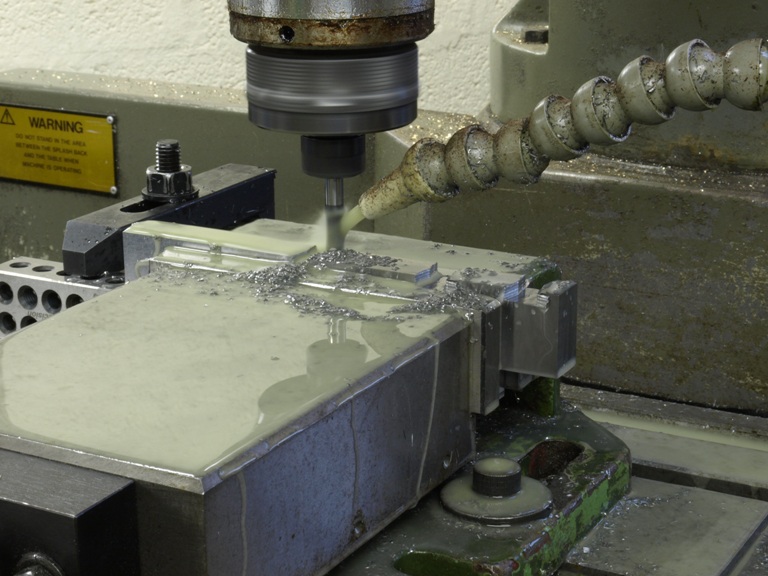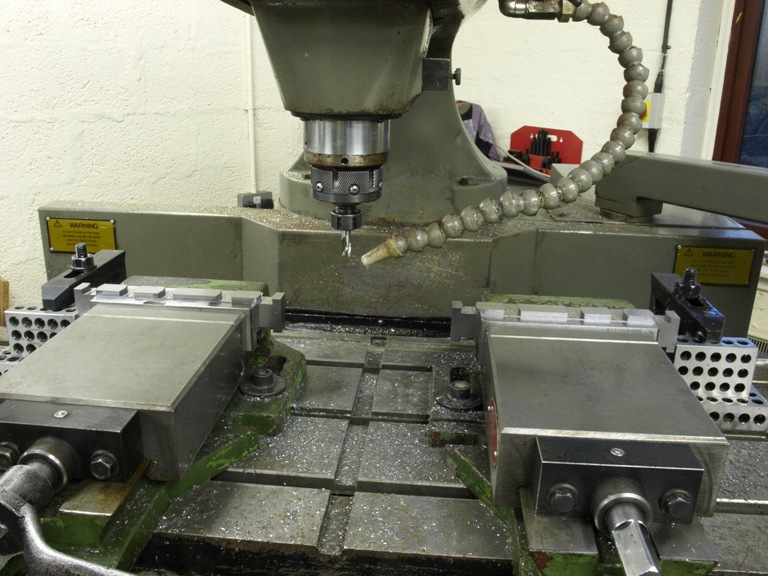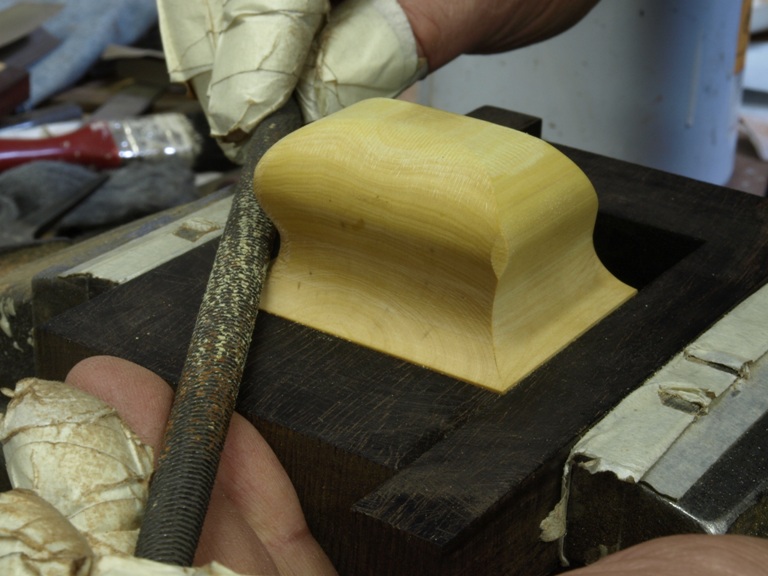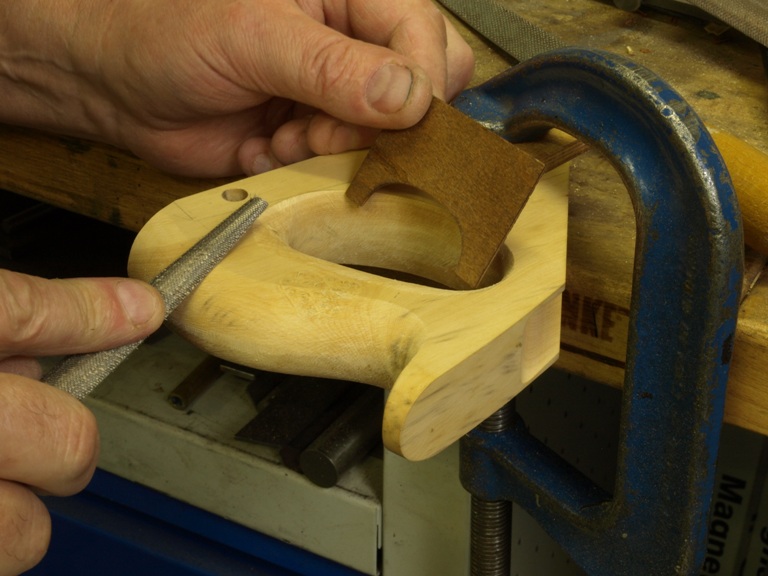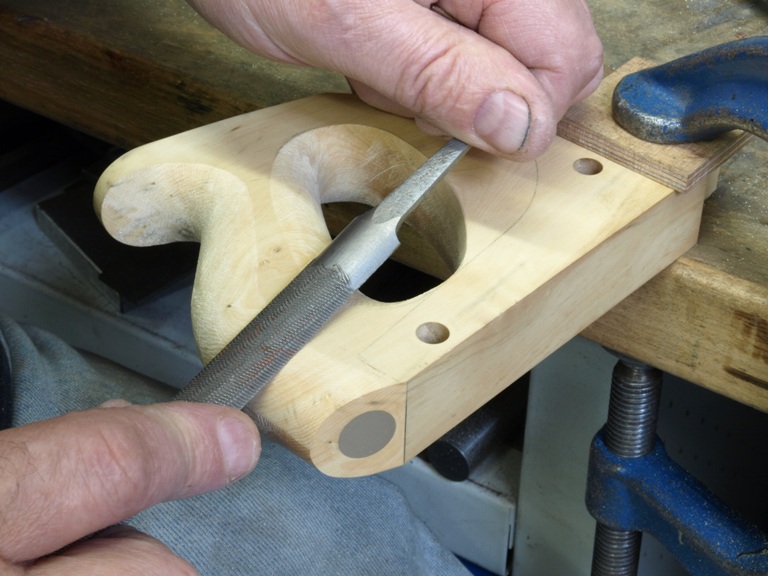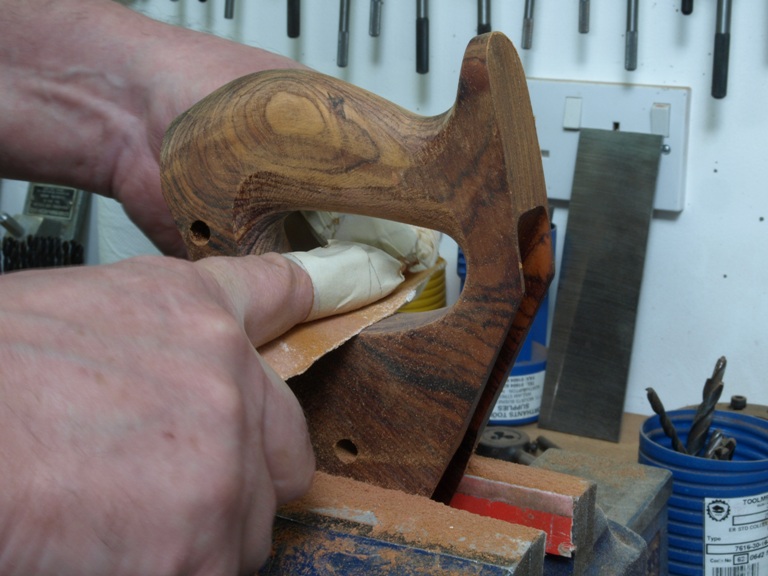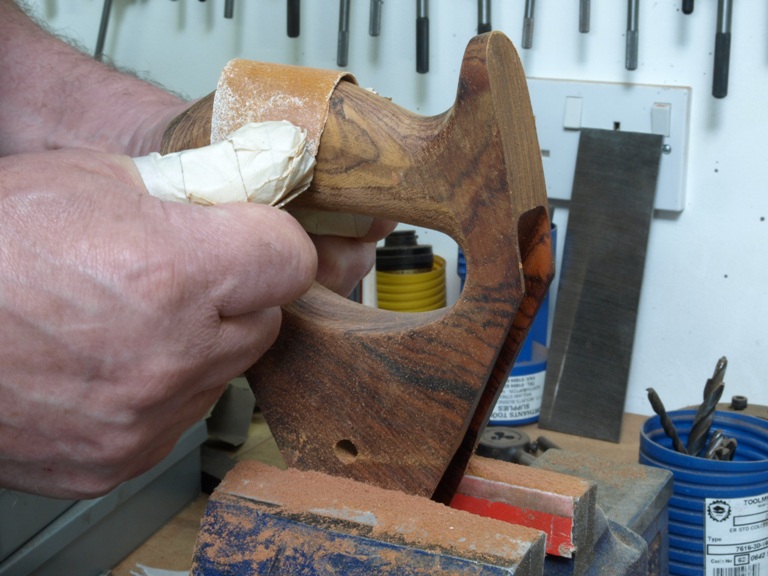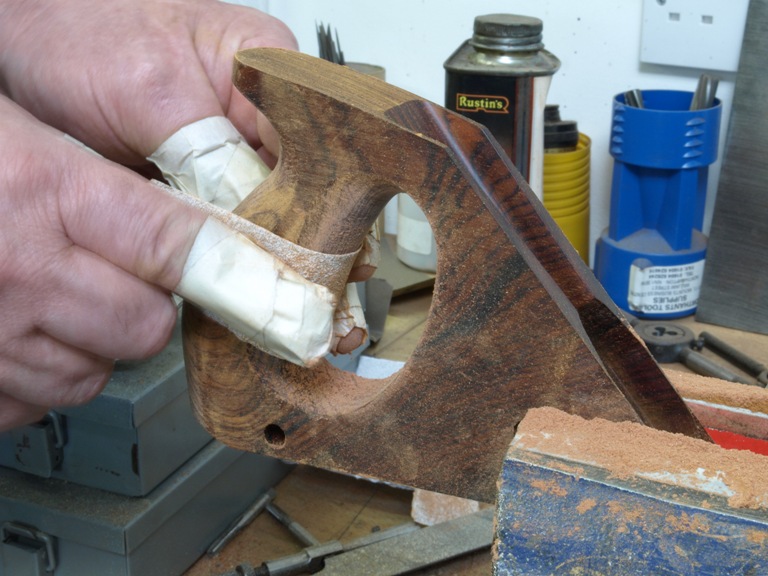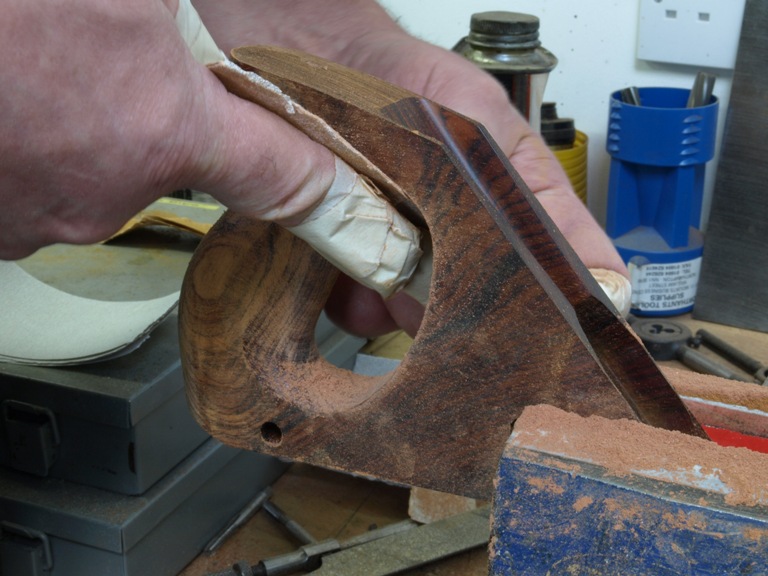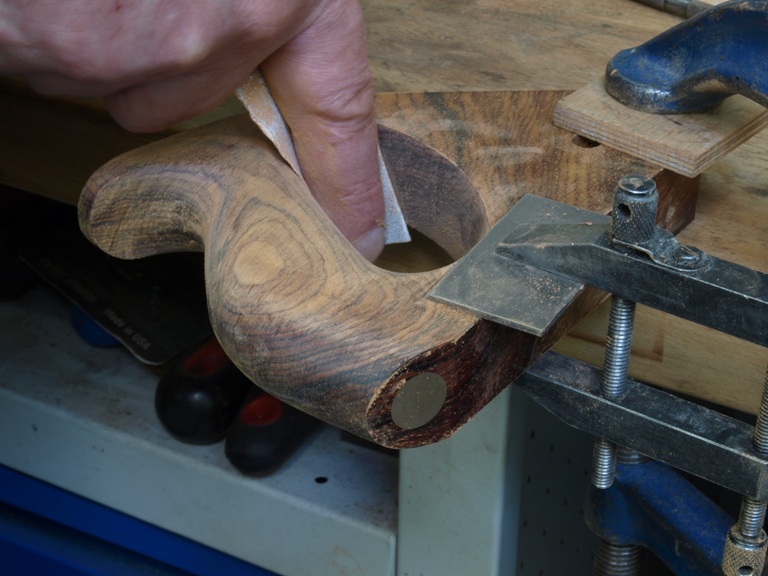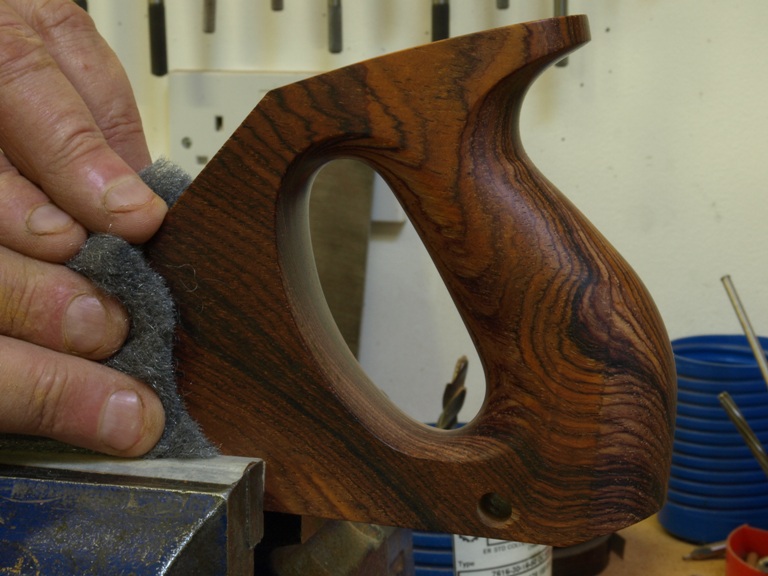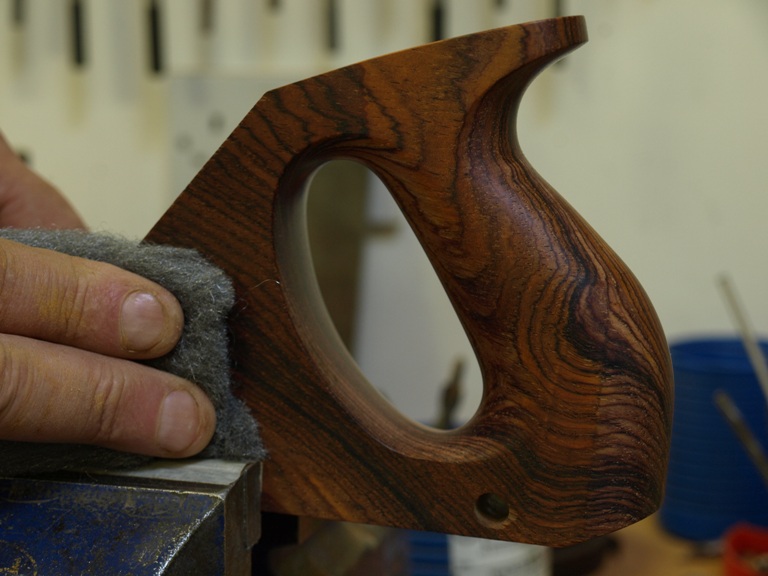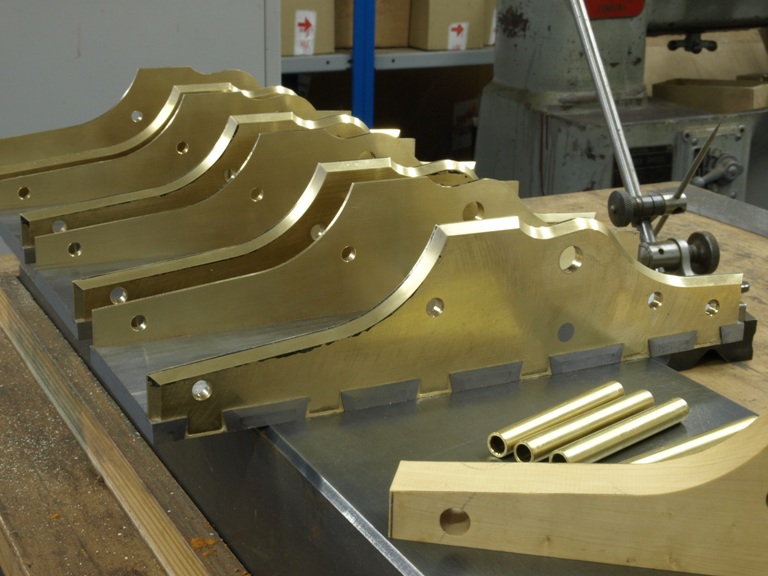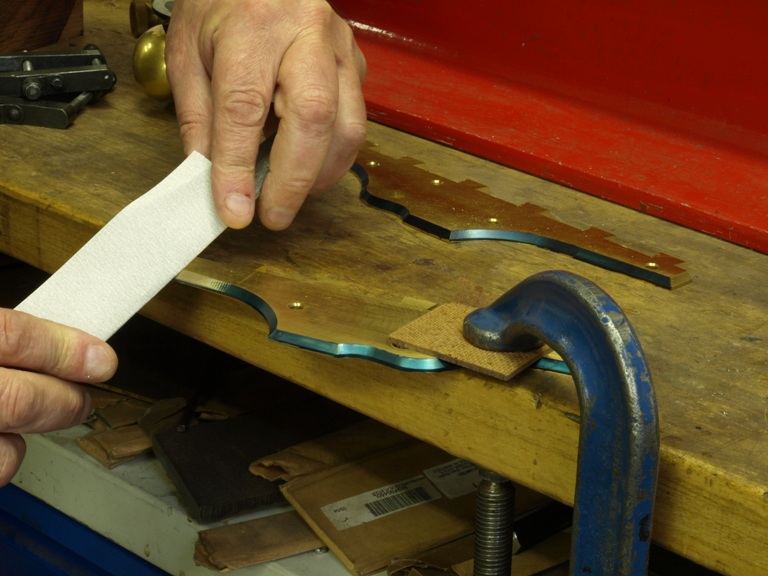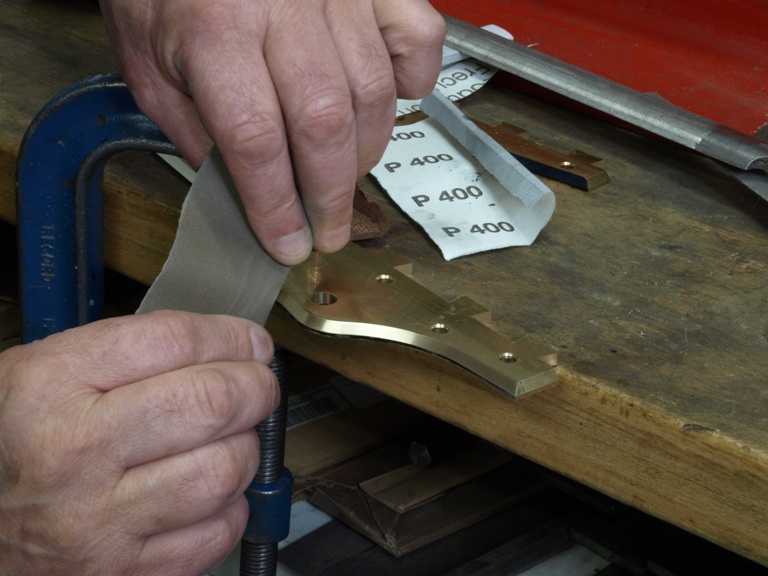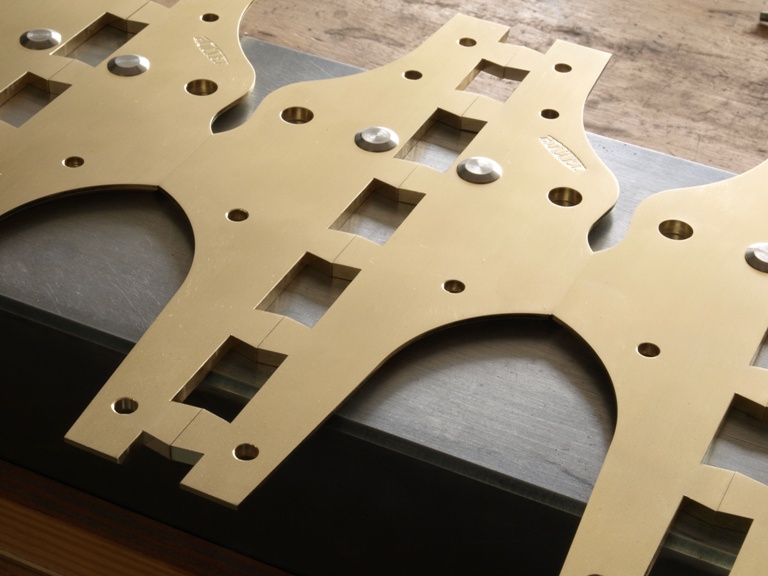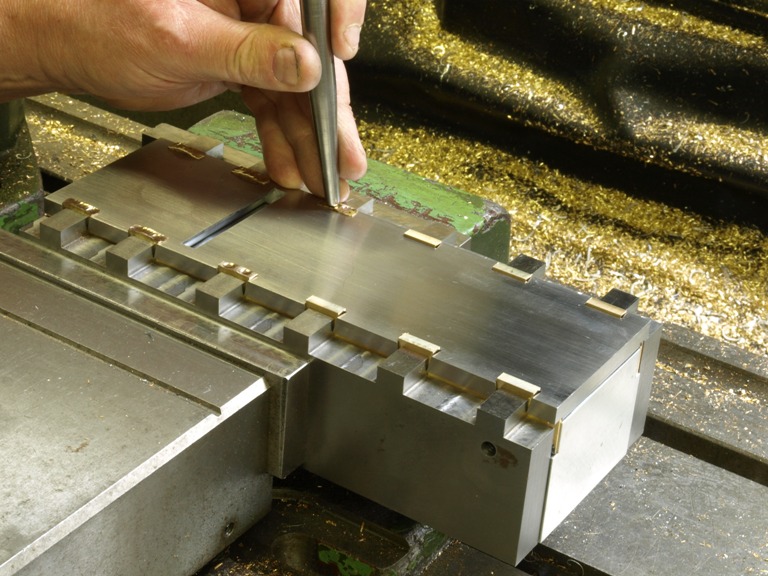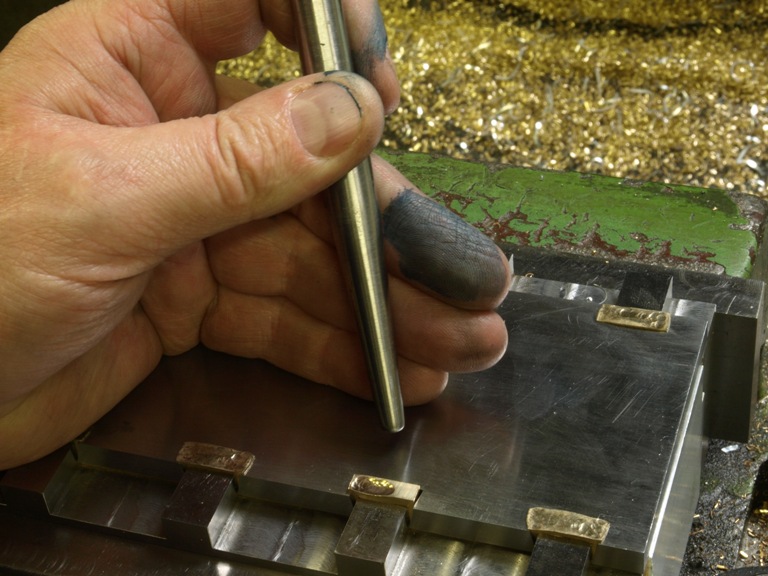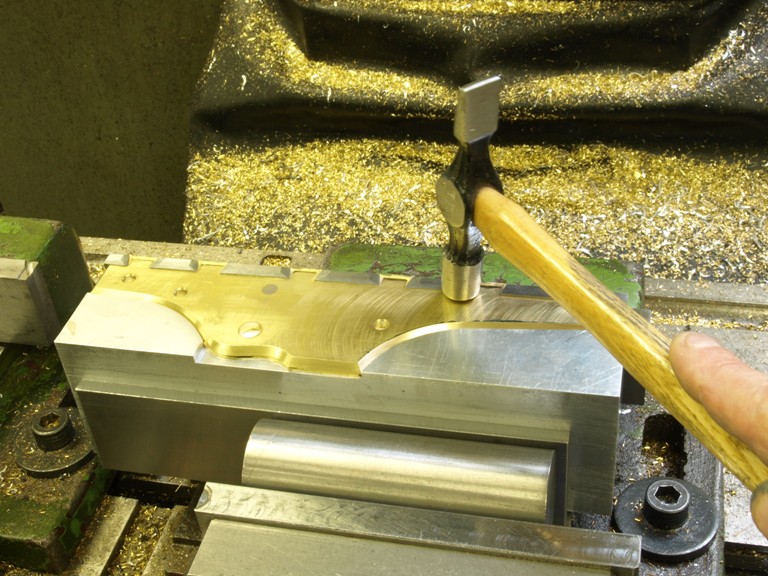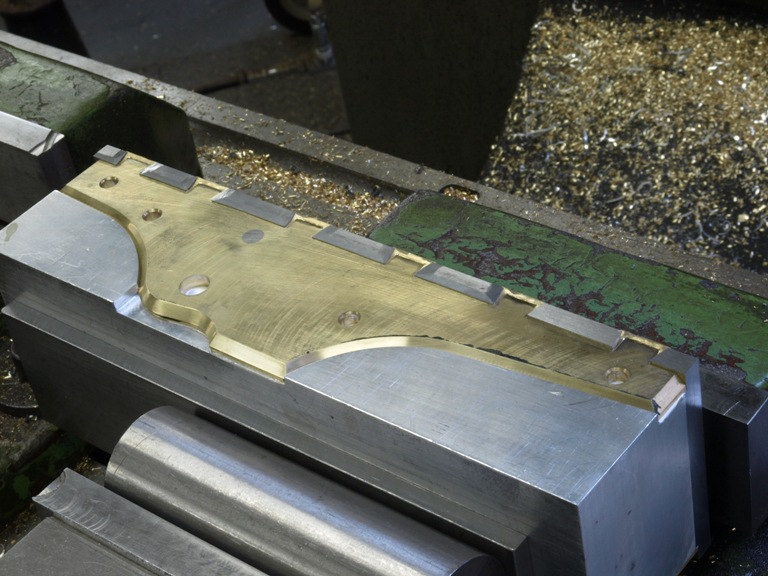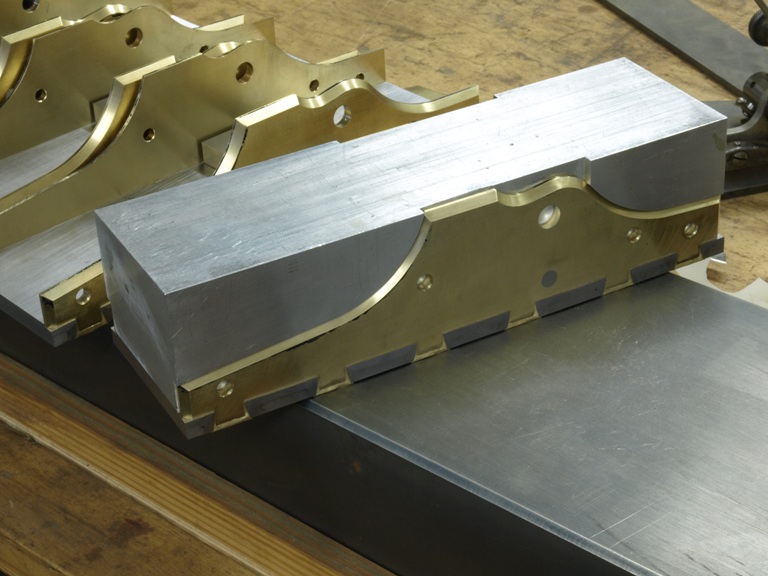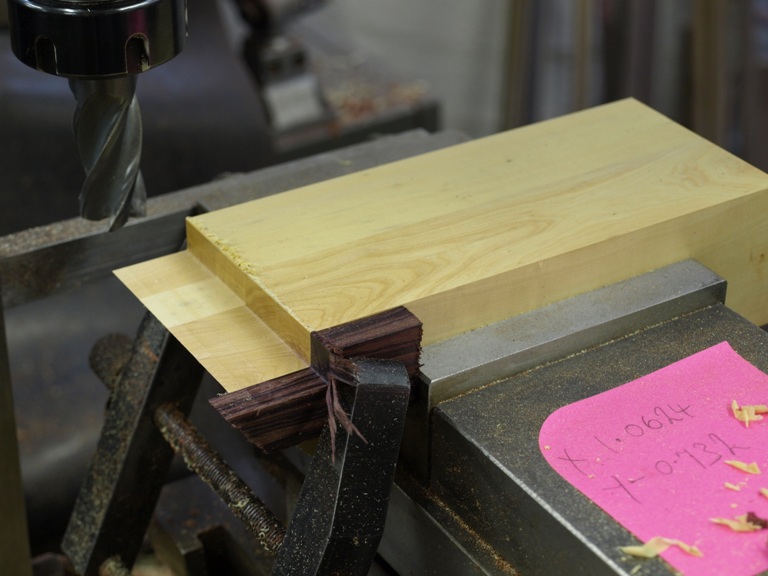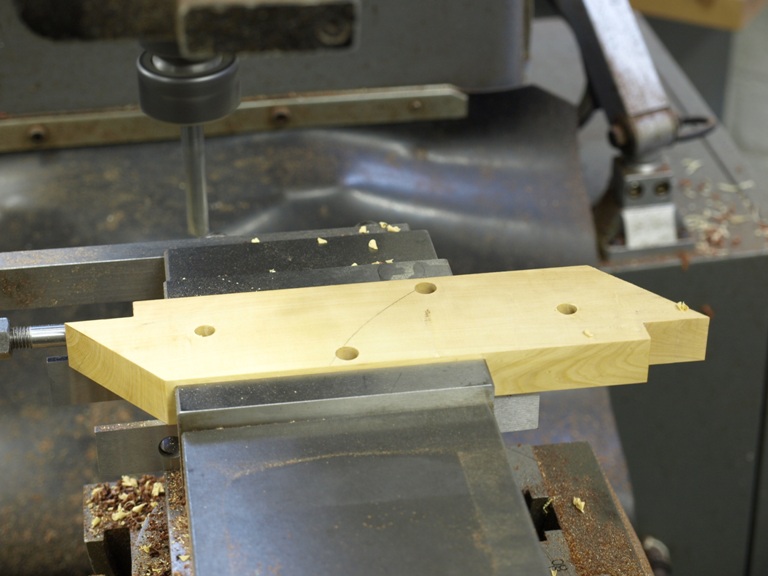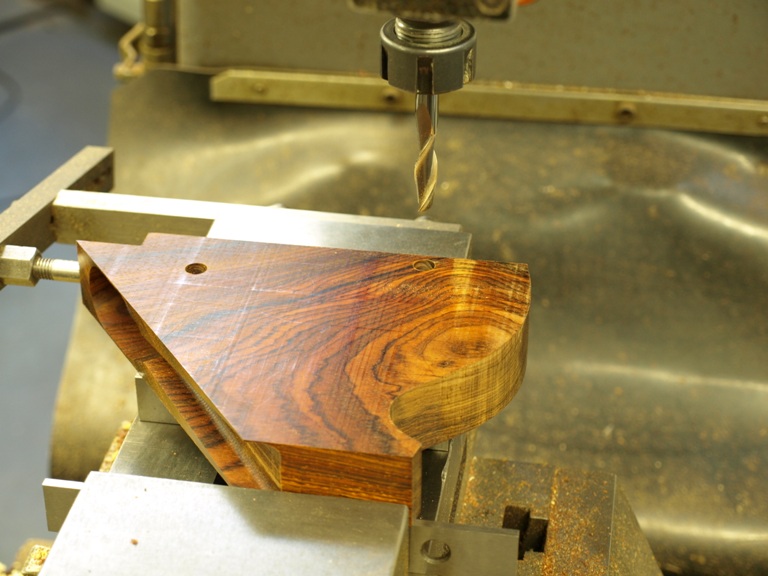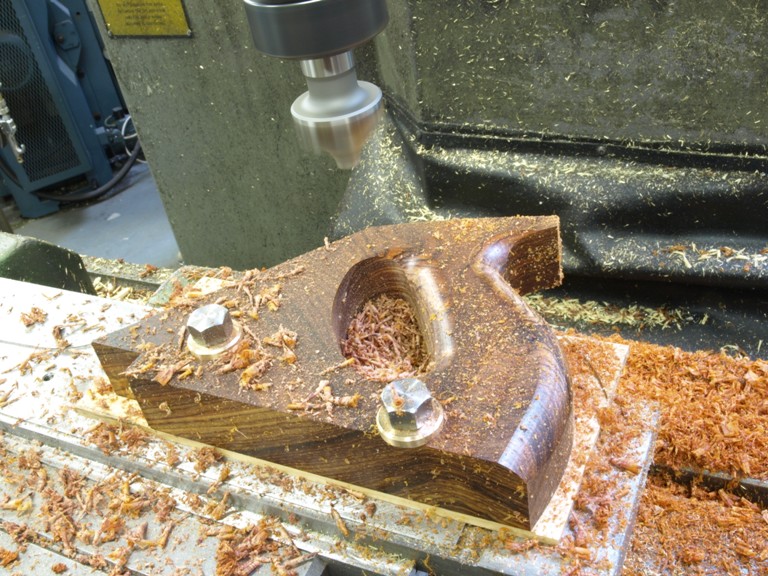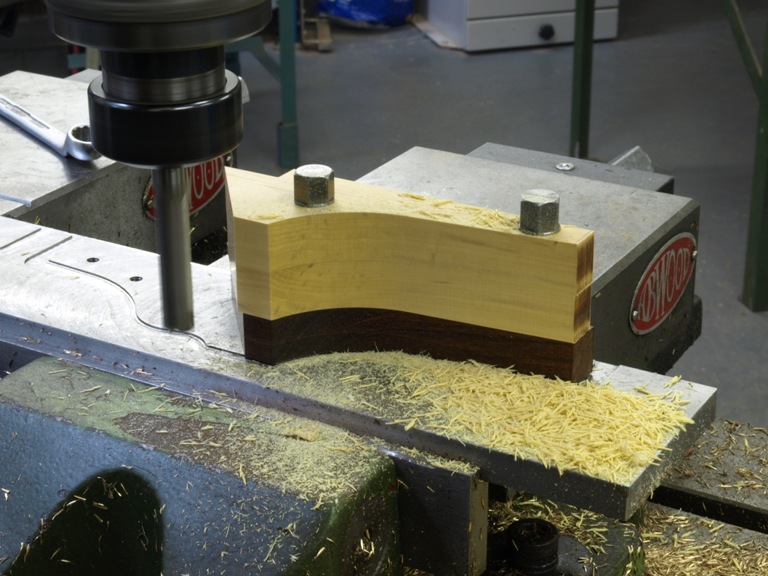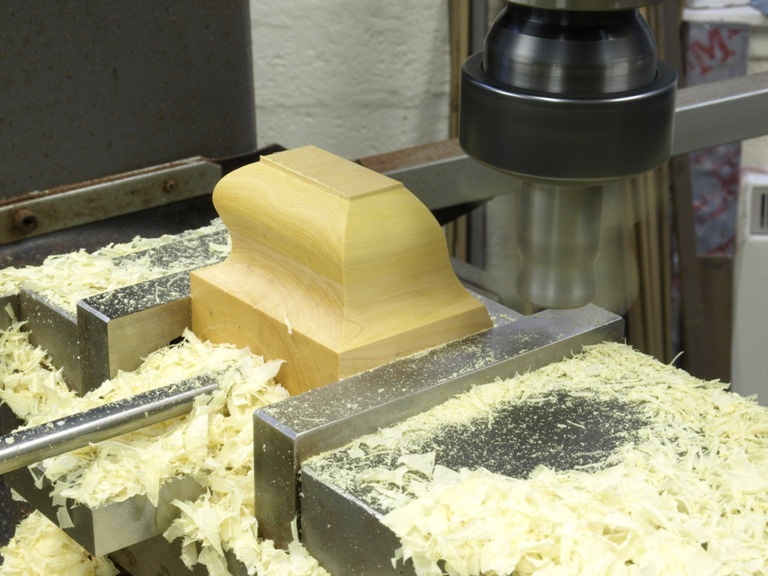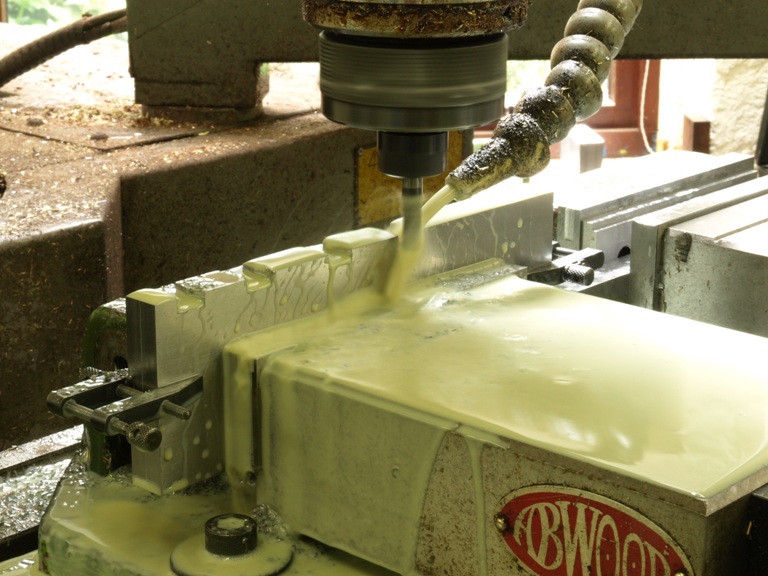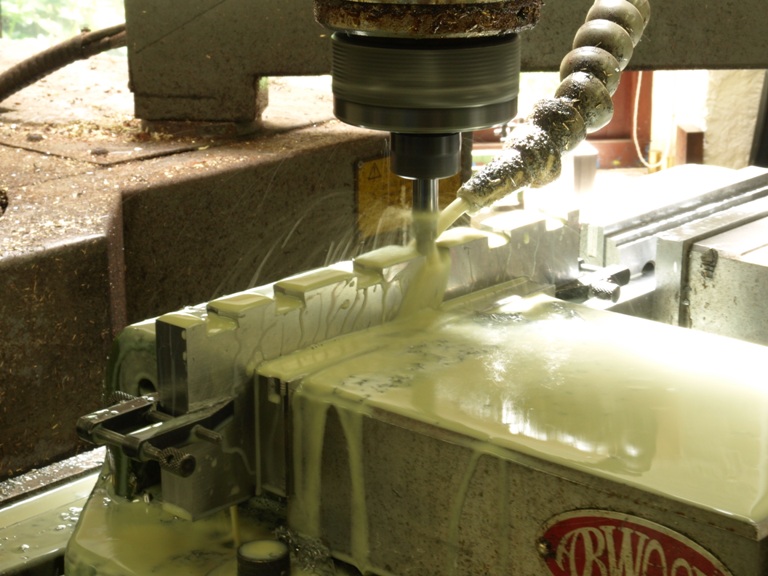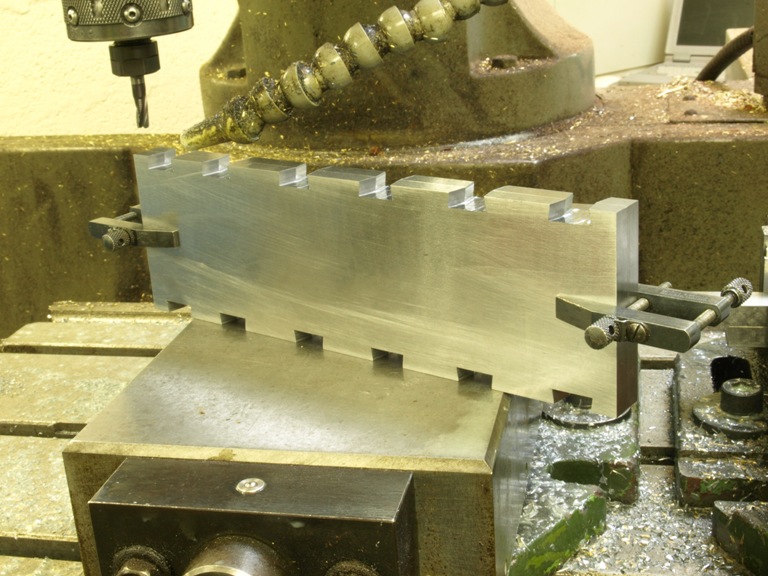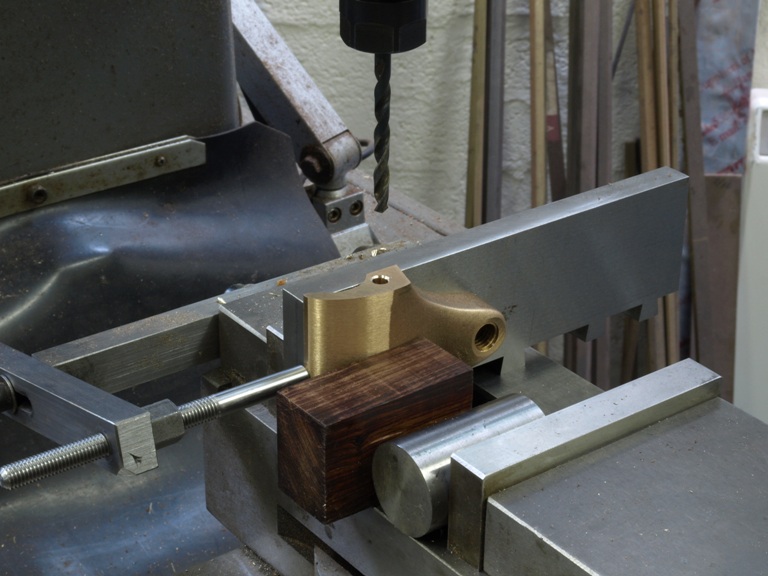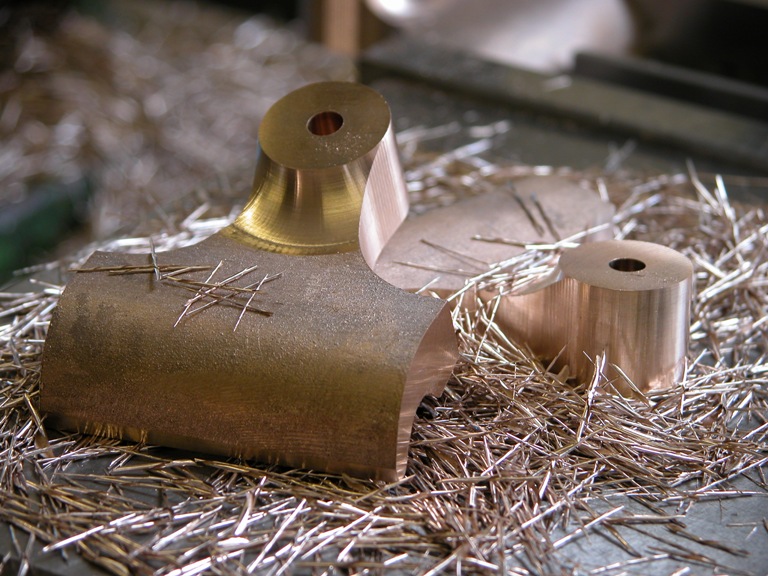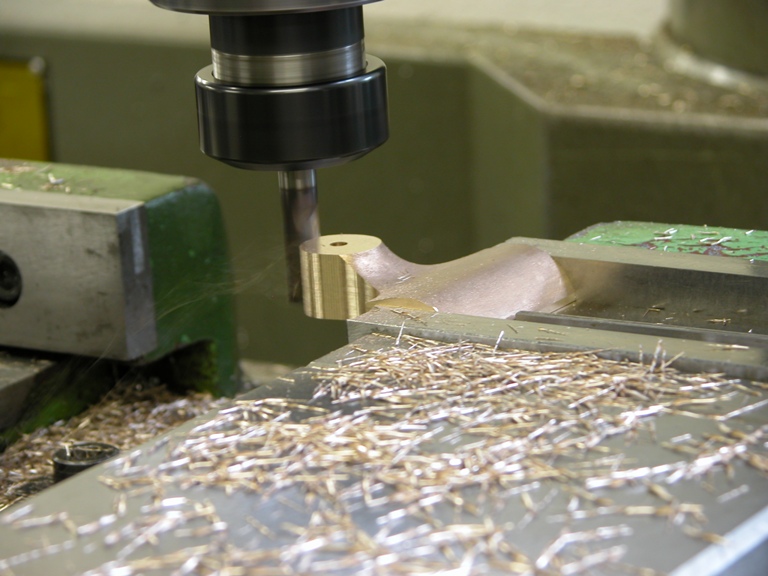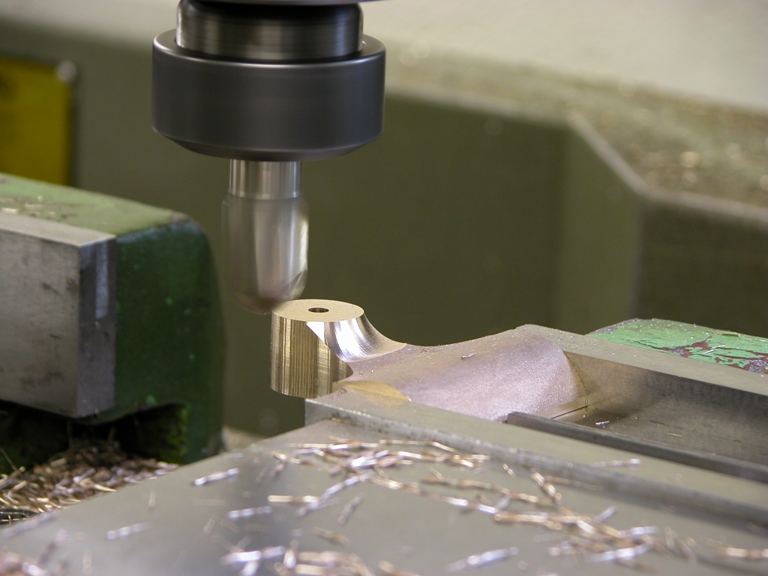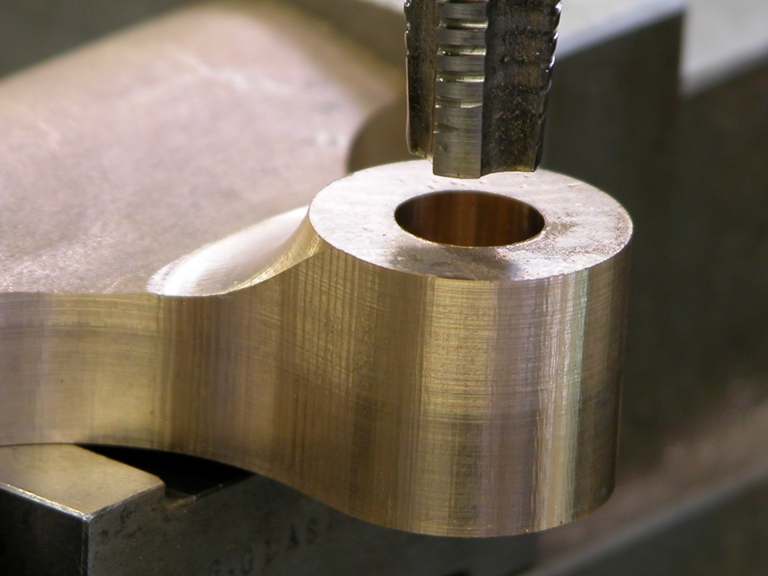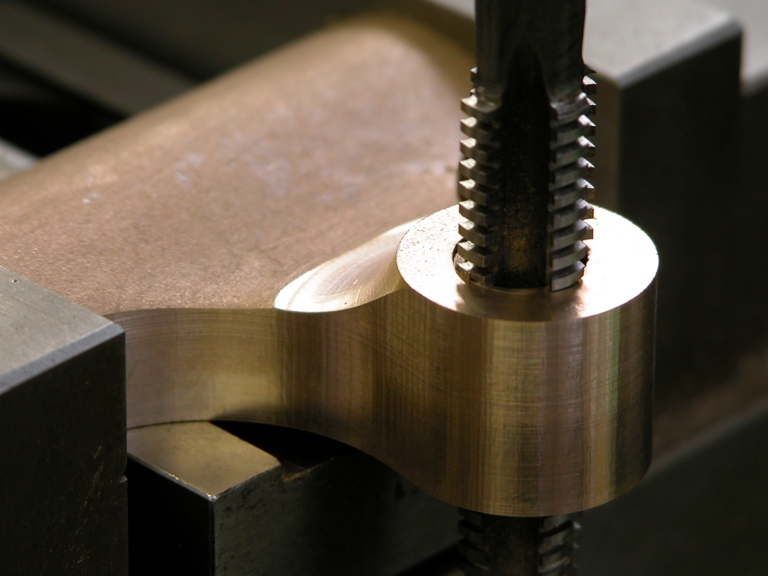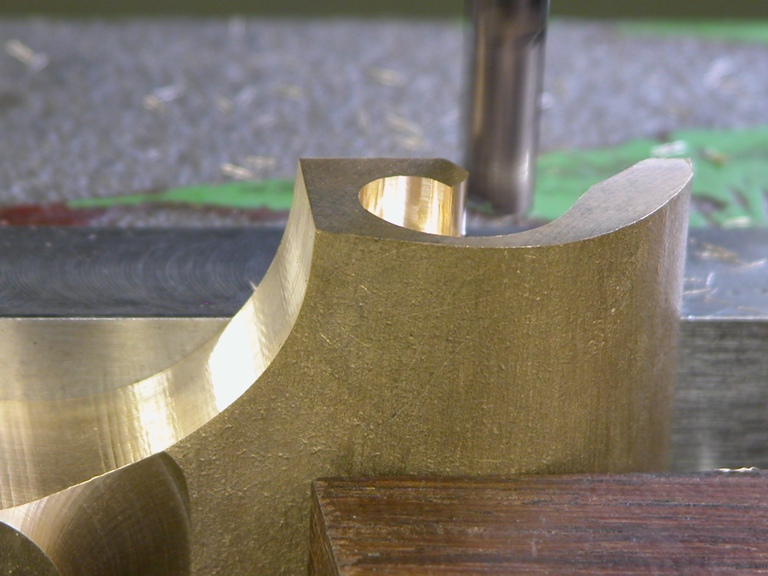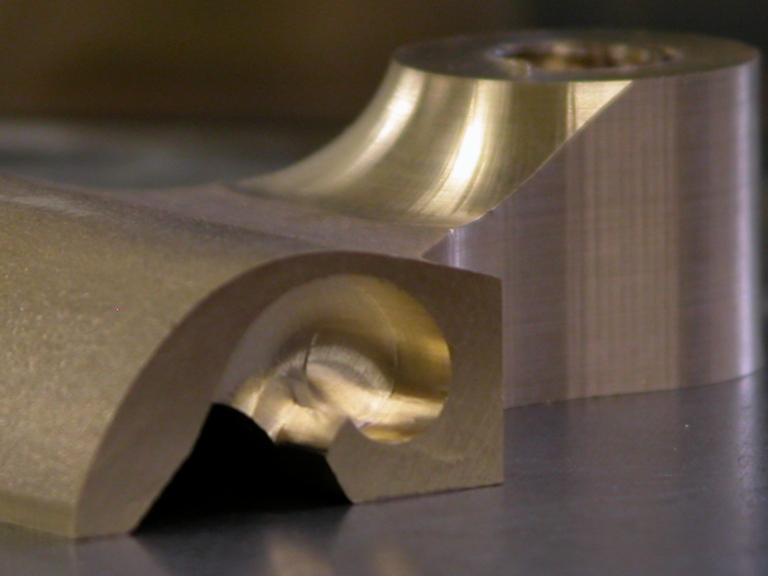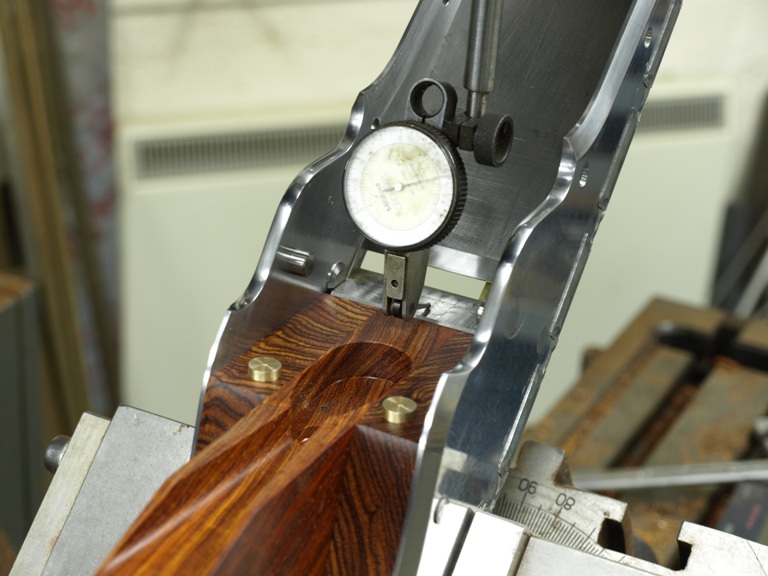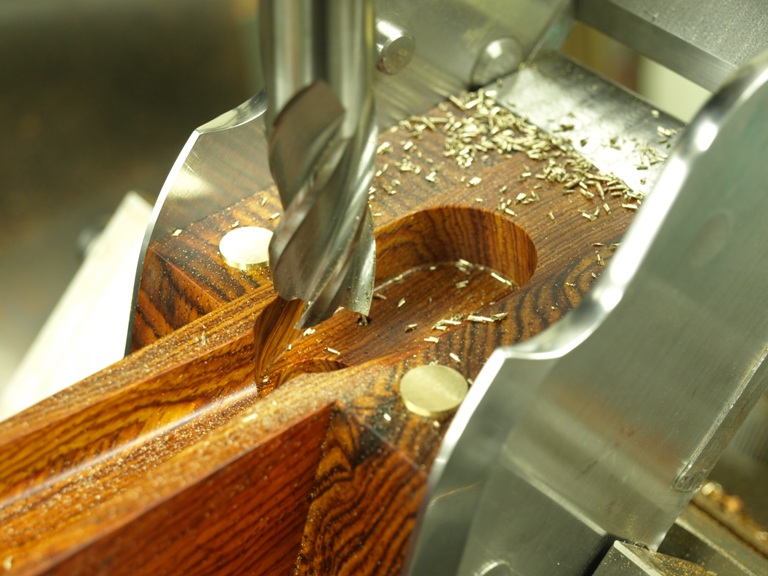A13 dovetailed infill plane continued (3)
Here I describe some of the work to the bottoms of the planes. This is an area where most of the work of the plane is. It is probably light years ahead of any other infill plane.
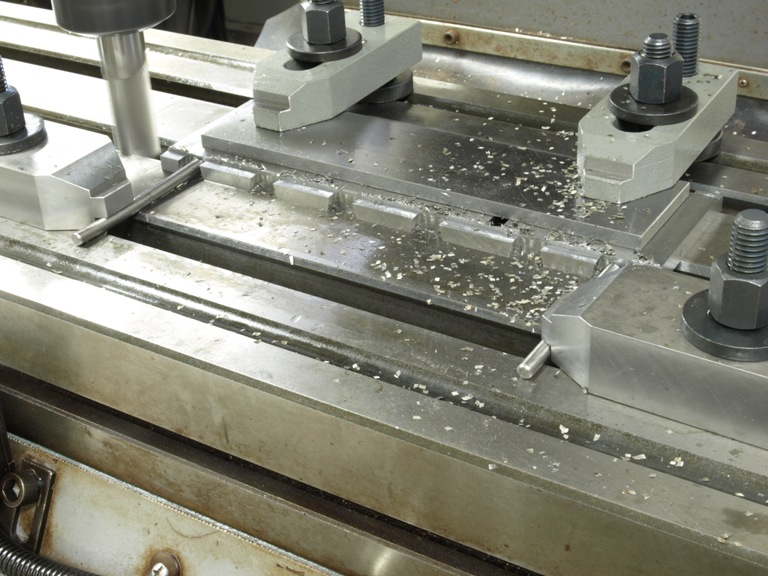
Rebate to dovetail
Machining stops to the dovetailing, this adds extra support to the plane sides and also provides a light stop. This is something I currently do to the shoulder planes and it will be a new feature to all my dovetail planes.
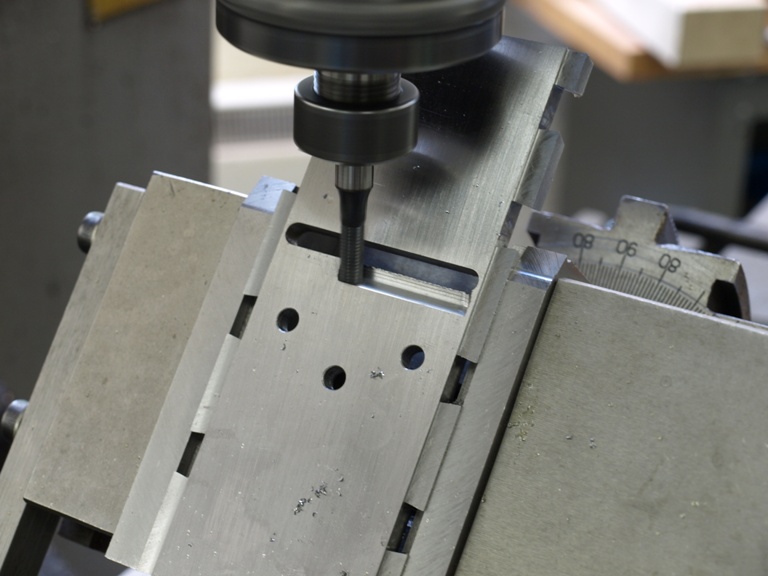
Roughing out bed area to mouth.
This area is rough machined prior to the frog fitting to facilitate better access around the mouth.
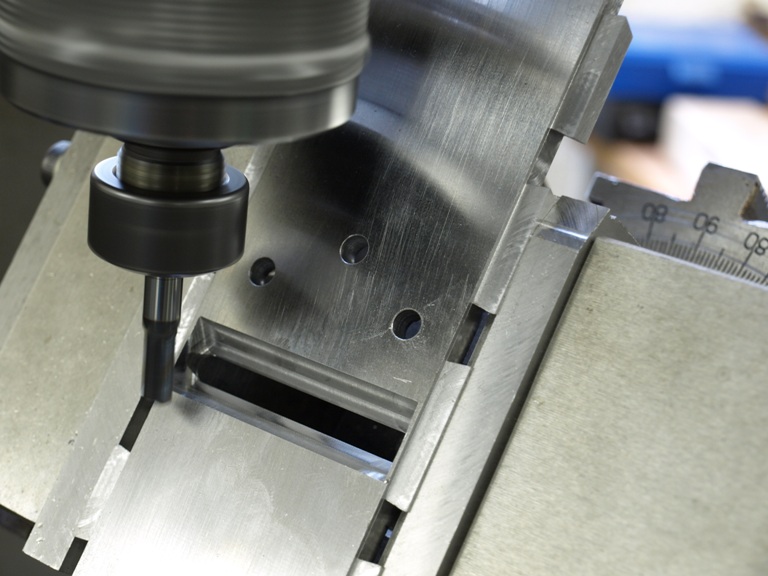
Milling to the front side of the mouth
This is one of the main reasons for leaving the finishing of the bed until last so that I can access an end mill to the front side of the mouth.
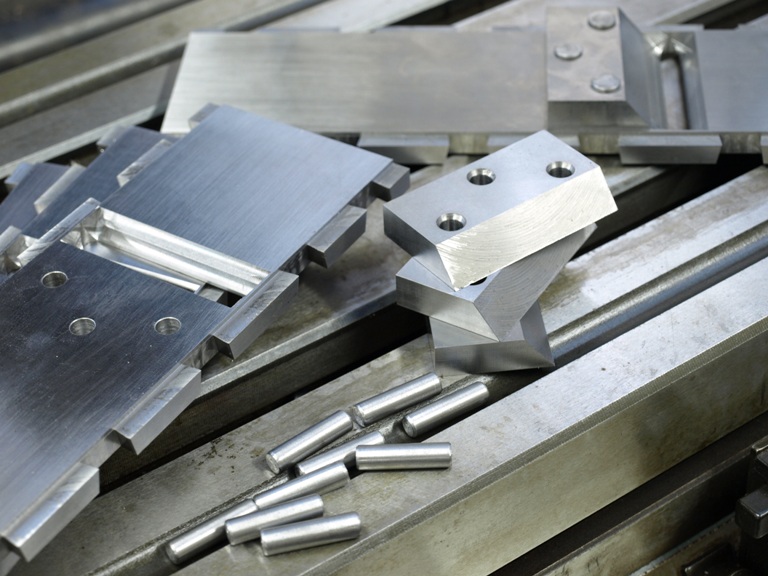
Frogs waiting for riveting
Now that 80% of the work to the mouth area is complete the frogs can now be riveted.
As you can see that most of the surfaces are surface ground and especially the contacting surfaces which will be air tight once the frogs are riveted. This is not achievable with filing.
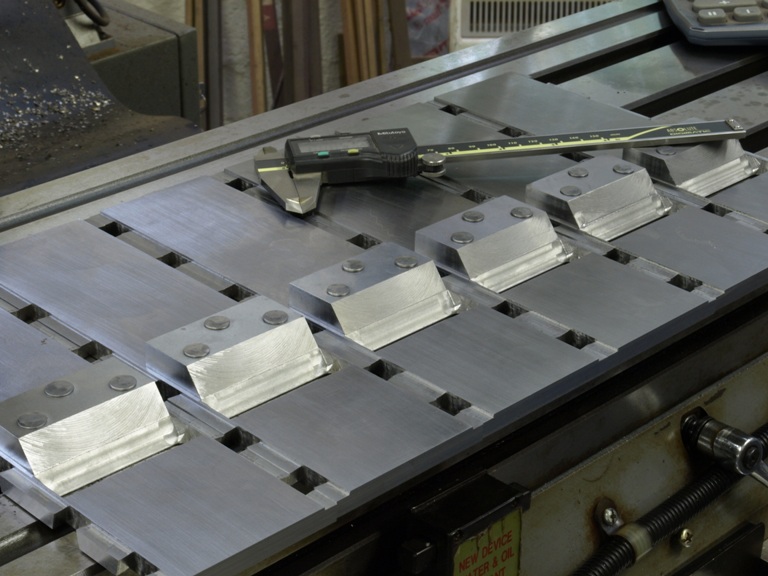
Frogs after riveting.
All that remains now is for the flushing of rivet heads and the bed machining.
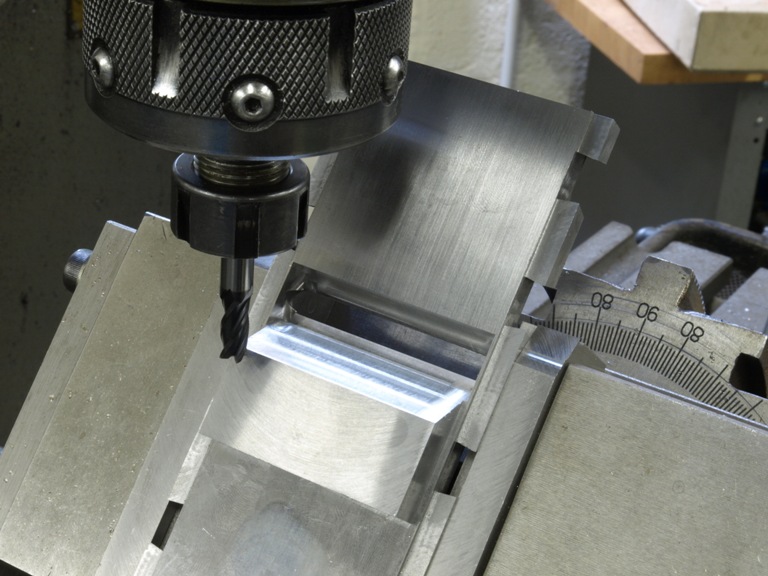
Finishing cut to blade bed
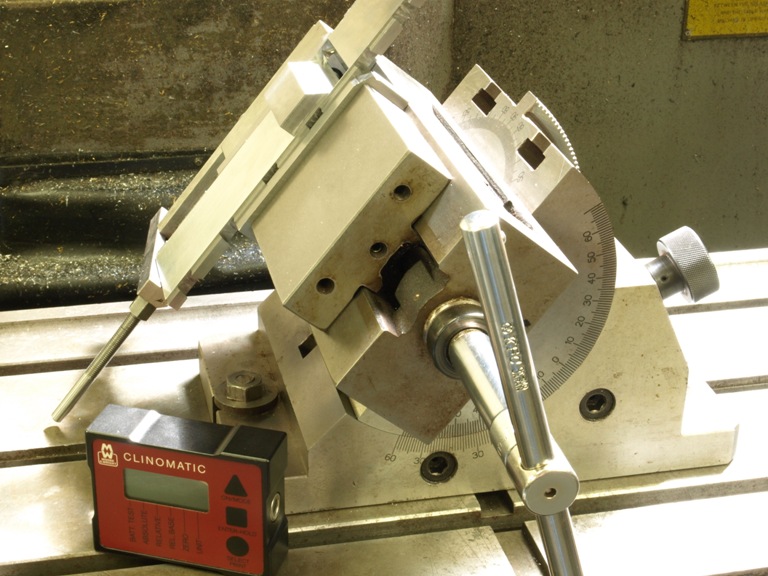
Work holding for bed working
The highest standard of bed working on a true plane with no azimuth error and the bed pitch is exact to 51 degrees to within 1 minute. This might not seem that important but it is to me because I know where everything else goes then. I want to know exactly where the pressure points are when the blade is clamped.
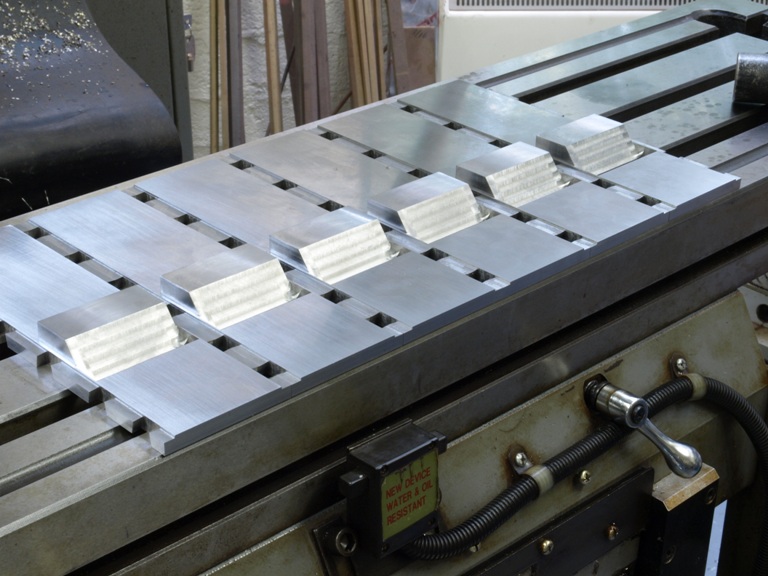
Plane bottoms complete
This is a nice sight for me as it is a milestone in the project. Once this is achieved I am a happy bunny.
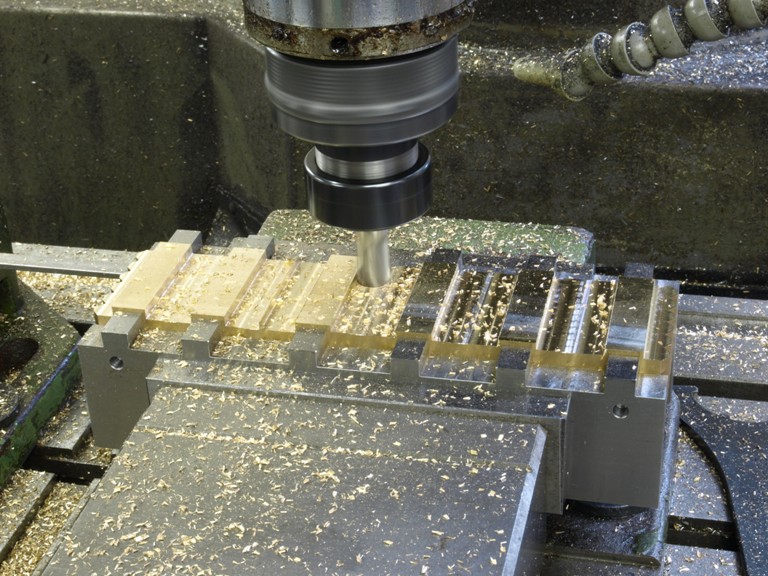
Roughing out the dovetails
I usually do these 6 pairs at a time and it takes several pecks especially with brass as it tends to chatter more than steel.
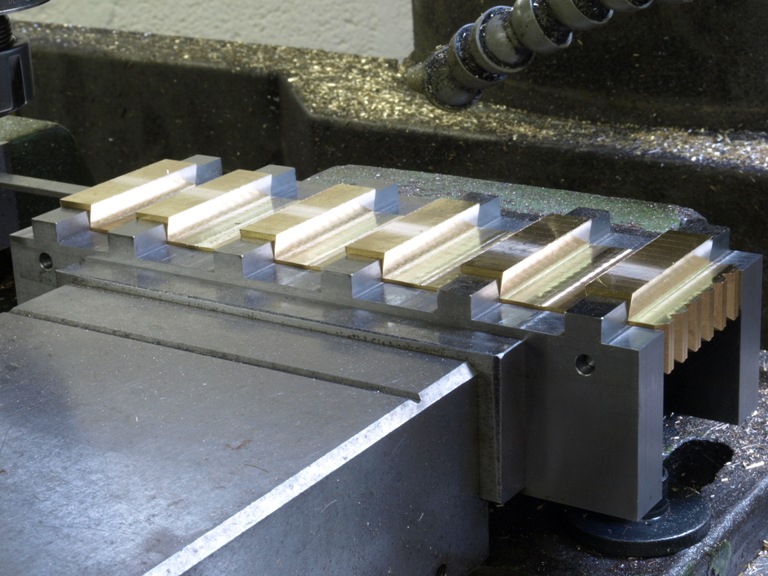
At last the final dovetail cut
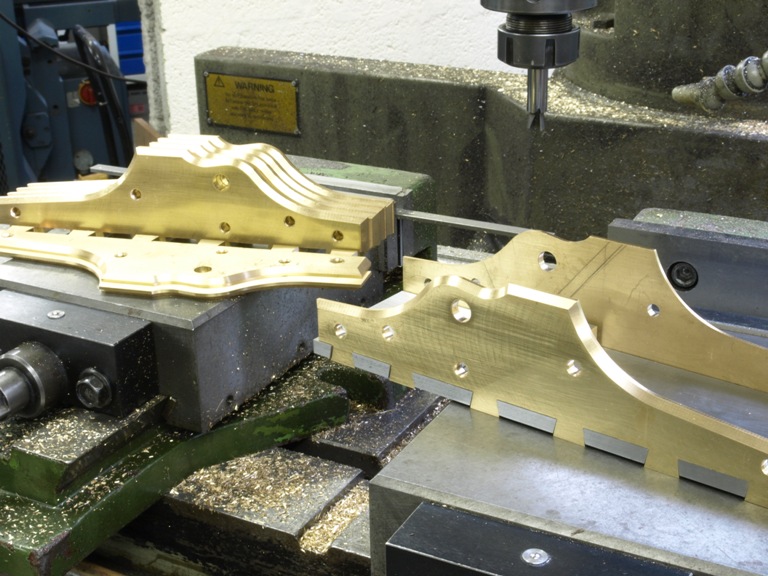
Checking for fit.
Now we are starting to look like planes.
